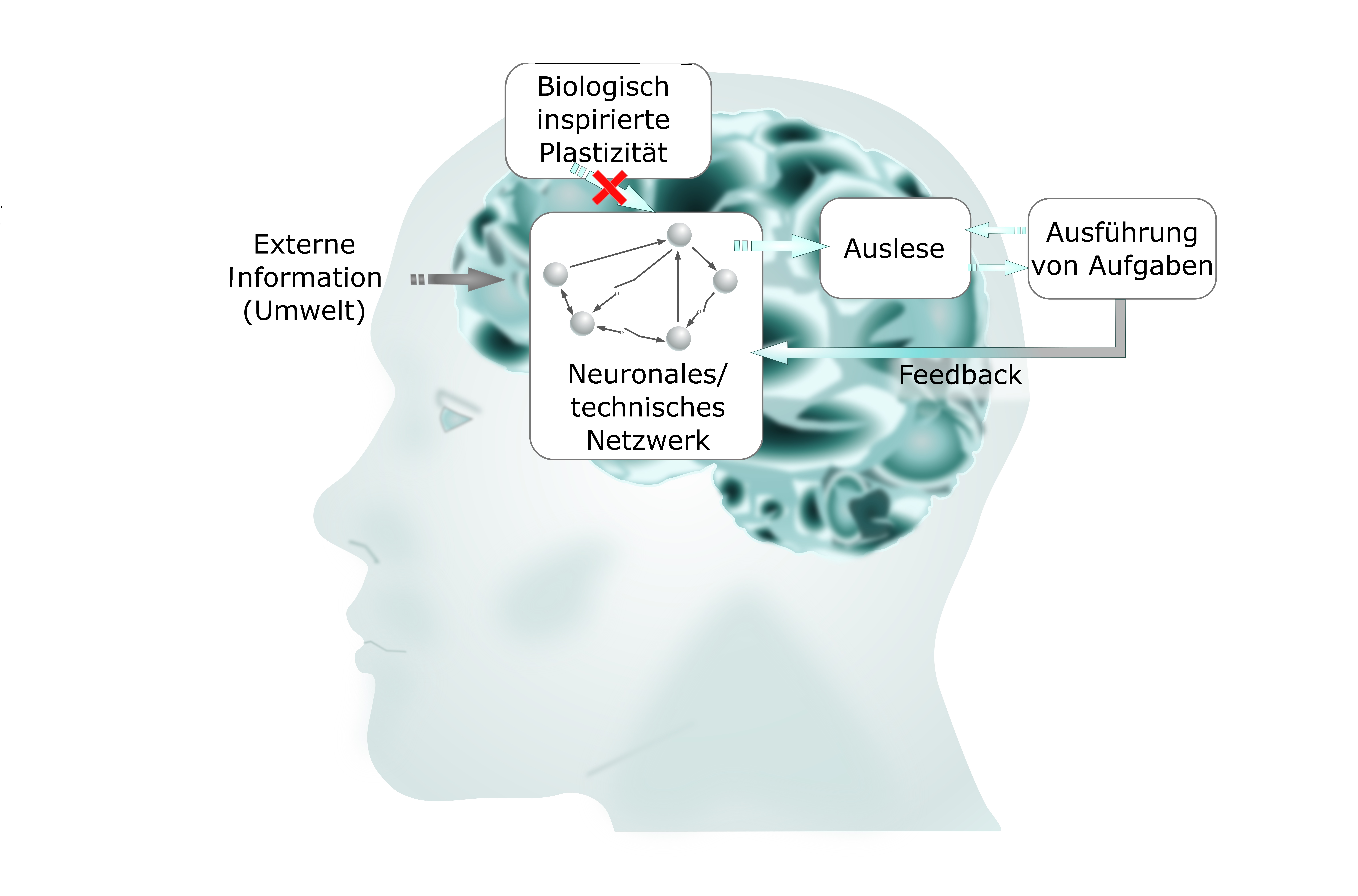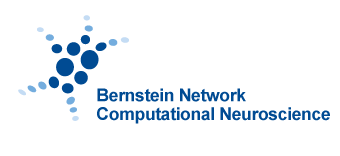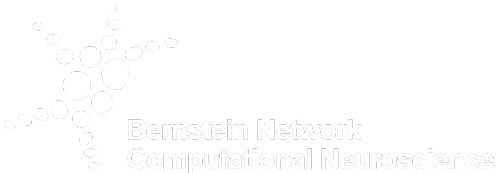Optimal working conditions for the brain
An interdisciplinary research team investigates biological and technical information processing

For its complex tasks, our brain has to adapt continuously ("plasticity"). More than previously assumed, the mechanisms behind this are controlled not only by the brain itself, but also by the external environment. © Hermann Kohlstedt
Bernstein member involved: Hermann Kohlstedt
Developments such as autonomous driving require technical systems that are very good at pattern recognition and need very little energy. The human brain could serve as a model here. How principles from biological information processing can be transferred to technical systems is being investigated by Kiel University (CAU) together with partners in the Collaborative Research Center (CRC) 1461 “Neurotronics: Bio-inspired Information Pathways”. With mathematical modeling, a research team has now succeeded in better understanding how the optimal working state of the human brain, the so-called criticality, is achieved. Their results mean an important step toward biologically-inspired information processing and new, highly efficient computer technologies and have been published in the scientific journal Scientific Reports recently.
The brain as a model for new computers
“In particular tasks, supercomputers are better than humans, for example in the field of artificial intelligence. But they can’t manage the variety of tasks in everyday life – driving a car first, then making music and telling a story at a get-together in the evening,” explains Hermann Kohlstedt, professor of nanoelectronics and spokesperson for the CRC 1461 “Neurotronics”. Moreover, today’s computers and smartphones still consume an enormous amount of energy. “These are no sustainable technologies – while our brain consumes just 25 watts in everyday life”, Kohlstedt continues. The aim of the interdisciplinary research network “Neurotronics” is therefore to develop new electronic components for more energy-efficient computer architectures. For this purpose, the alliance of engineering, life and natural sciences, investigates how the human brain is working and how that has developed.
Close to chaos: the greatest performance is possible here
Information processing in the brain is based on a network of around 86 billion neurons. They pass on information in the form of voltage pulses via synapses and axons – either simultaneously or independently of one another (“synchronization”). According to a thesis from neurobiology (“the critical brain hypothesis”), our brain processes information most quickly and energy-efficiently when it is in the “phase transition” in between. This intermediate state, the so-called “criticality”, can also be detected using magnetic resonance imaging (MRI) or electroencephalography (EEG).
In this highly complex state, the brain can react particularly sensitively and in a variety of ways to external influences, which is why it always tries to achieve this state. “The brain is close to the chaos here: Even small external stimuli suddenly cause entire ensembles of neurons to fire. Information spreads like an avalanche and can therefore be transmitted particularly easily, even to areas of the brain that are far apart,” explains Kohlstedt. This enables a wide range of reactions.
Simulated in an artificial network
In their current publication, the scientists at CAU investigated how this state of criticality emerges in neuronal and also artificial networks. Until now, it was assumed that it is a “self-organized criticality” for which mechanisms in the brain alone are responsible. “However, we were able to show for the first time that external influences, i.e. the environment itself, also lead to this state to be ‘imposed’ on brain-like networks,” says first author Dr. Petro Feketa, a member of CRC 1461 and the Chair of Automation and Control Engineering at CAU.
To do this, the team applied mathematical modeling in an artificial network of nonlinear oscillators. Similar to neurons in a neural network, these circuits generate periodic voltage pulses that can also synchronize. In addition, the connections between oscillators can change. The research team simulated how the oscillators connect over time as they interact with the environment in order to solve tasks as quickly and efficiently as possible. The network repeatedly achieved a state of criticality, similar to that in the brain. “This was particularly surprising because the criticality property was not present initially and we did not aim for achieving this originally,” Feketa said.
Evolutionary Biology: Wide range of reactions makes sense
“From the point of view of evolutionary biology, this result is quite understandable. Our environment is so diverse that the structure and internal dynamics of our brain have been shaped in such a way that the state of criticality provides a maximum range of solutions for a wide variety of tasks,” says Prof. Dr. Thomas Meurer, head of the Chair of Automation and Control Engineering at CAU.
The brain has therefore adapted its state of criticality to influences and the increasing demands of the ever-changing environment. “To put it simply, one could say: our brain grows with its tasks – even more than we had previously thought,” summarizes Kohlstedt.
Background information:
The term criticality comes from statistical physics and is of central importance for phase transitions. For example, a ferromagnetic material such as iron (figure a) loses its magnetization with increasing temperature, thus becoming “paramagnetic”. At the temperature Tc the material takes on the degree of the highest complexity. At this “critical state” even a small externally applied magnetic field affects the internal parameters of the material and it offers the external stimuli an enormous number of possible states. A model from neurobiology (the “Critical Brain Hypothesis”) states that the human brain works also at a phase transition (b), between all neurons firing simultaneously (synchronicity) or randomly (all neurons firing independently). Again, the complexity of the system is at its maximum at this point. So the brain exhibits the greatest variety of responses to external stimuli here and is thus best able to respond to the demands of its environment.
About the Collaborative Research Centre (CRC) 1461:
Since 2021, the German Research Foundation (DFG) is funding the CRC 1461 “Neurotronics: Bio-inspired Information Pathways“ with around 11.5 million euros for an initial four years. Here, scientists from the fields of neuroscience, biology, psychology, physics, electrical engineering, materials science, network science, and nonlinear dynamics aim to develop new hardware for information processing. The host university is Kiel University with its partner institutions Ruhr University Bochum, Ilmenau University of Technology, Leibniz Institute for Innovative Microelectronics Frankfurt/Oder, Leibniz Institute for Science and Mathematics Education Kiel, University Medical Center Hamburg-Eppendorf and Lübeck University of Technology.




